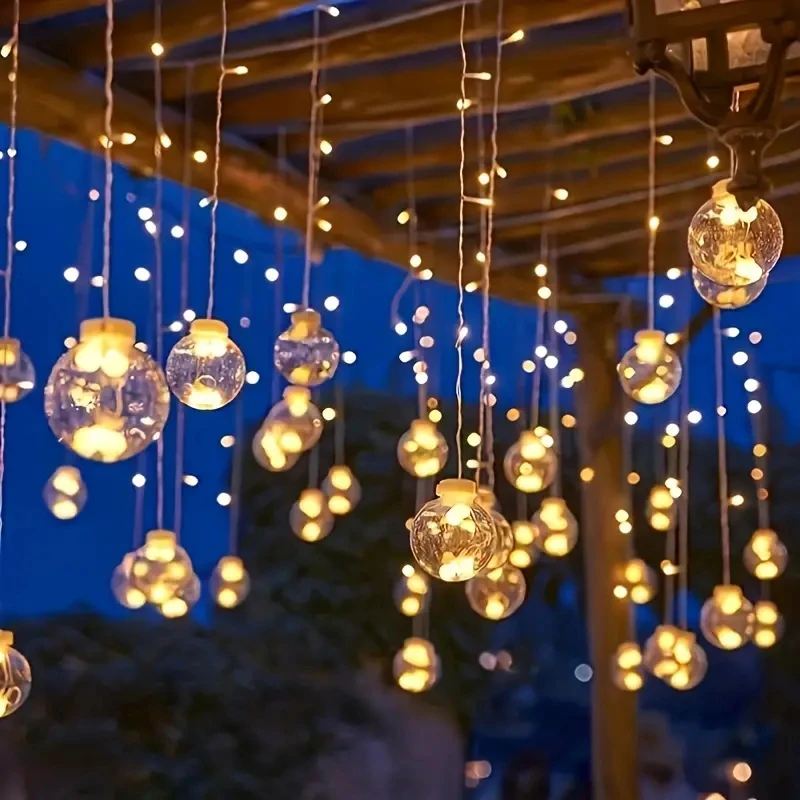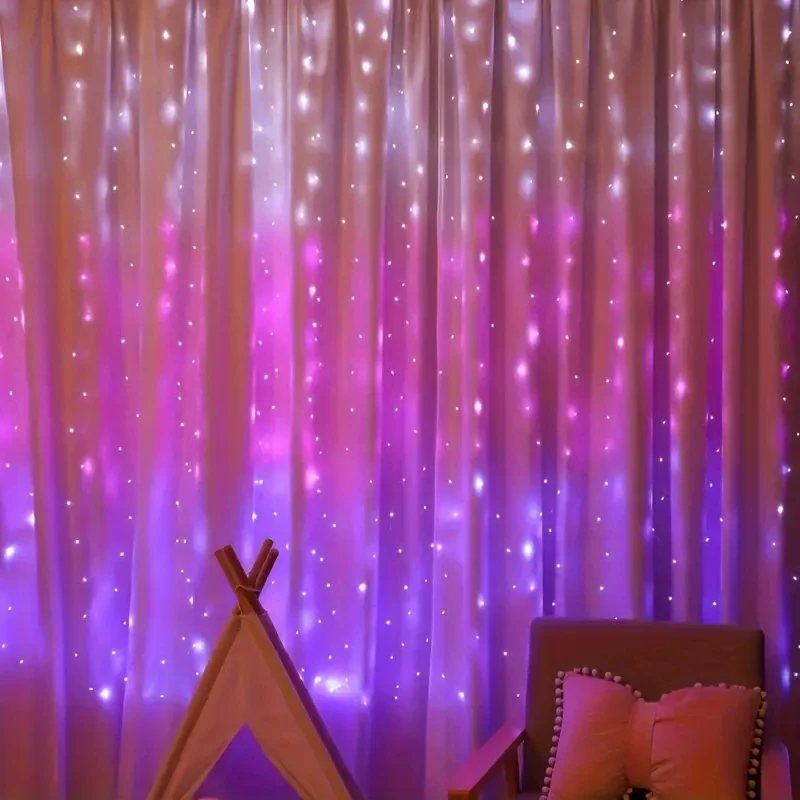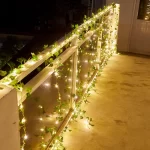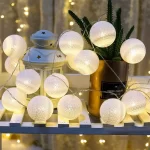String lights, with their warm glow and versatile designs, have become a staple in outdoor and indoor decor, adding a touch of magic to patios, bedrooms, and special events. However, the frustration of a single bulb outage disrupting the entire string’s illumination can dampen the ambiance. Fear not! This comprehensive guide divulges the secrets to tracing and fixing those pesky bulb-outs, ensuring your string lights remain a radiant highlight in your space.
Understanding How String Lights Work
Before delving into troubleshooting, it’s crucial to grasp the basics of string light functioning:
- Series vs. Parallel Circuits: Traditional string lights operate in series, meaning each bulb is connected sequentially, forming a single electrical loop. When one bulb burns out, the circuit breaks, causing the entire string to go dark.
- Shunt Technology: Modern LED string lights often employ shunts within each socket, which bypass faulty bulbs, keeping the rest of the string lit. Understanding your light string’s technology guides your repair strategy.

Diagnosing the Issue: Isolate the Culprit
Locating the offending bulb is the first step towards restoration:
- Segment Testing: Disconnect the string into sections and plug each part in separately. The section that fails to light indicates the problematic bulb resides there.
- Visual Inspection: Carefully examine each bulb for visible damage, such as cracks or blackening at the base, which are telltale signs of a blown bulb.
- Tactile Approach: Gently twist and wiggle bulbs. Loose connections can also cause the string to fail.
The Bulb Replacement Process
Once identified, replacing a faulty bulb requires patience and the right technique:
- Safety First: Ensure the lights are unplugged before handling to avoid electric shock.
- Correct Bulb Type: Use only replacement bulbs compatible with your string lights to maintain safety and functionality.
- Gently Remove and Replace: Twist the faulty bulb counterclockwise to remove it, being careful not to damage the socket. Insert the new bulb clockwise until it’s firmly seated but not forced.
Dealing with Shunted Bulbs
Shunted bulbs, common in LED strings, complicate replacement due to their dual function as conductors:
- Identifying Shunted Sockets: Look for two metal contacts inside the socket instead of one – a hallmark of shunted design.
- Specialized Bulbs Required: Shunted sockets necessitate specific replacement bulbs that include the shunt mechanism.
- Professional Help: If unsure, consult the manufacturer’s guide or consider professional assistance to avoid damaging the delicate circuitry.
When Bulb Replacement Doesn’t Work
If replacing the bulb doesn’t restore light, consider these additional issues:
- Fused Bulb Sockets: Sometimes, a bulb burns out and fuses the socket contacts, requiring socket replacement.
- Short Circuit: Inspect the wiring for any exposed or damaged areas that could cause a short circuit.
- Transformer or Controller Malfunction: In systems with transformers or controllers, these components may be the issue rather than individual bulbs.
Testing with a Multimeter
For more precise diagnosis, a multimeter comes in handy:
- Resistance Check: Set the multimeter to Ohms (Ω) and touch the probes to the bulb contacts. A reading close to zero indicates a closed circuit (good bulb), while infinite resistance signals a broken circuit (faulty bulb).
- Voltage Test: Verify if electricity is reaching each bulb by testing the voltage across the bulb contacts. Lack of voltage points to a problem elsewhere in the string.
Repairing Damaged Wiring
Minor wiring issues can often be fixed with electrical tape or wire nuts:
- Exposed Wires: Carefully strip back insulation, twist wires together, and cover with electrical tape or a wire nut, ensuring a secure and insulated connection.
- Broken Wires: For severed wires, splice them together using wire connectors, reinforcing with electrical tape.
Advanced Troubleshooting Techniques
For persistent problems, delve deeper:
- Bypassing a Socket: In non-shunted systems, if a replacement bulb or socket is unavailable, bypassing the faulty socket by connecting the wires directly (with caution) can temporarily restore functionality.
- Fuse Replacement: Some strings have replaceable fuses; check your manual and replace if blown.

Preventive Maintenance for Longevity
Avoid future bulb-outs with these proactive measures:
- Regular Inspection: Routinely check for loose connections, damaged bulbs, or frayed wires.
- Weatherproofing Outdoor Lights: Use waterproof covers for sockets and invest in weather-resistant strings for outdoor installations.
- Proper Storage: Store lights loosely coiled to prevent wire strain and damage during off-seasons.
Embracing Smart String Lights
Upgrade to smart string lights to minimize maintenance hassles:
- Individual Bulb Control: Many smart lights allow controlling each bulb independently, making it easy to identify and deactivate faulty ones.
- Self-Diagnostic Features: Some models come with built-in diagnostics that alert you to issues and guide repairs.
Creative Workarounds for Non-Replaceable Bulbs
For strings with integrated, non-replaceable bulbs, get creative:
- Strategic Layering: Strategically layer working strings over the non-functioning areas to mask the outage.
- Repurpose as Accent Lighting: Use sections of non-working strings as ambient lighting in less conspicuous areas, wrapped around non-visible structures.
The Art of Customizing String Lights
Transform standard strings into personalized masterpieces:
- DIY Socket Repairs: With basic soldering skills, replace damaged sockets or convert non-shunted sockets to accommodate shunted bulbs.
- Adding Bulbs: In parallel circuits, you can safely add more bulbs (within power limitations) for customized brightness or color schemes.
Eco-Friendly Options for Disposal and Recycling
Dispose of old bulbs responsibly:
- LED Recycling: Many communities have e-waste recycling programs that accept LED bulbs. Check locally for drop-off points.
- CFL Disposal: CFL bulbs contain mercury and require special disposal. Visit Earth911.com to find recycling centers near you.
The Emotional Impact of Well-Lit Spaces
Remember, the effort put into maintaining your string lights pays off in ambiance:
- Mood Enhancement: Properly functioning string lights create a warm, inviting atmosphere, enhancing relaxation and social gatherings.
- Design Flexibility: With reliable lighting, you can experiment with different arrangements and styles, personalizing your space creatively.
Celebrating the Art of DIY Repairs
Embracing the do-it-yourself spirit in maintaining your string lights not only saves money but also fosters a sense of accomplishment and connection with your surroundings:
- Skills Development: Each troubleshooting and repair experience hones your problem-solving abilities and familiarizes you with electrical basics.
- Creative Fulfillment: Tailoring solutions to unique problems, such as customizing replacement parts or devising innovative display ideas, taps into your creative potential.
- Sustainability Promotion: By extending the lifespan of your string lights through repairs, you contribute to reducing waste and promoting a more sustainable lifestyle.
Community Engagement and Inspiration Sharing
Your journey in repairing string lights can inspire others and foster a sense of community:
- Online Platforms: Share your repair stories, tips, and transformations on social media or dedicated forums, encouraging others to tackle their own lighting issues.
- Workshops and Meetups: Organize or attend local DIY workshops centered around home repairs and lighting design, turning your newfound skills into teachable moments.
- Collaborative Projects: Engage friends and family in lighting projects, turning repairs into bonding experiences and creating shared spaces that everyone can take pride in.
Integrating String Lights into Home Decor Trends
Understanding how to fix bulb-outs opens up endless possibilities for integrating string lights into current decor trends:
- Minimalist Magic: Use warm-white LED strings in clean, uncluttered spaces for a touch of understated elegance.
- Boho-Chic Vibes: Drape colorful or patterned string lights over macramé hangings, or incorporate them into a canopy of dreamcatchers for a Bohemian flair.
- Industrial Fusion: Highlight exposed brick or metal accents with Edison-style filament bulbs in wire cages, blending vintage charm with industrial aesthetics.

Conclusion: Illuminating Pathways to Serenity
Tracing and fixing bulb-outs in string lights is not merely a technical exercise; it’s a journey towards preserving the enchantment these lights bring to our spaces. By understanding their workings, employing strategic troubleshooting techniques, and practicing preventive maintenance, you ensure that your string lights continue to cast their warm glow, elevating the ambiance and mood of any setting. With a little patience and know-how, even the peskiest of bulb-outs can be transformed into opportunities for creativity and rejuvenation, reminding us of the subtle yet powerful impact of well-crafted illumination.


